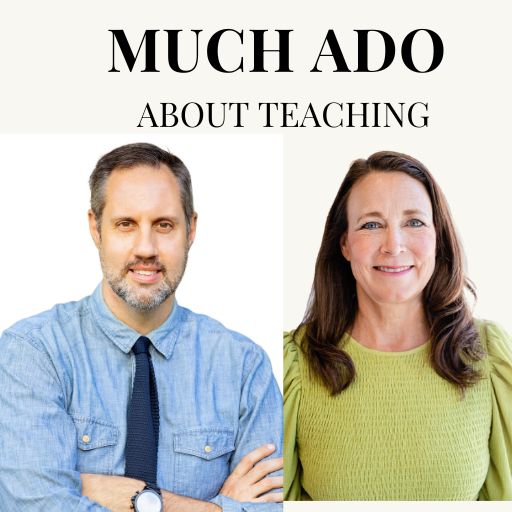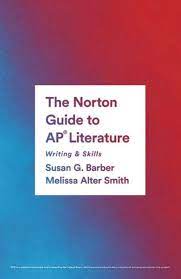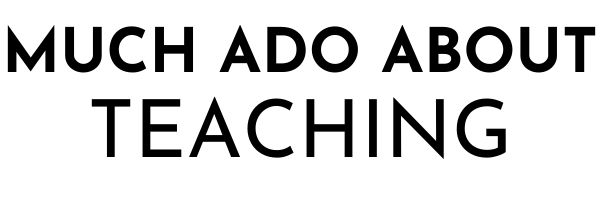Before I became a teacher I dreamed about my classroom. I imagined my students arriving each day with anticipation in their eyes and wonder in their hearts. I envisioned a room with hands in the air, thoughtful discussions, and signs of fascination and curiosity. I pictured students glued to their seats when the bell rang because they didn’t want the learning to stop.
Nowhere in my dreams did I plan. I only thought about the results, not the preparation. I only envisioned what my classroom would look like and feel like. I never considered all the grunt work that needed to be done to get there.
As Benjamin Franklin said, “by failing to prepare, you are preparing to fail.”
Alexis Wiggins, a veteran teacher turned instructional coach, wrote a viral blog post in 2014, sharing her experience shadowing a student for two days. This instructional coach was a student in the fullest sense. She copied notes along with the students. She took the test along with students. When it was time to work in groups, she was right there in the mix along with the students.
Instead of finding classrooms where learning is fun, captivating, and so contagious that even the worst students loved coming to class, she found something else. What she saw and what she experienced was sobering.
Her three biggest takeaways were that learning was sedentary, passive, and stressful.
I’m going to quote a big chunk of her blog post because I want you to feel what it is like for the student when planning takes a back seat.
| Key Takeaway #1 Students sit all day, and sitting is exhausting. I literally sat down the entire day, except for walking to and from classes. We forget as teachers, because we are on our feet a lot – in front of the board, pacing as we speak, circling around the room to check on student work, sitting, standing, kneeling down to chat with a student as she works through a difficult problem…we move a lot. But students move almost never. And never is exhausting. Key Takeaway #2 High school students are listening during approximately 90% of their classes. I asked my tenth-grade host, Cindy, if she felt like she made important contributions to class or if, when she was absent, the class missed out on the benefit of her knowledge or contributions, and she laughed and said no. I was struck by this takeaway in particular because it made me realize how little autonomy students have, how little of their learning they are directing or choosing. Key takeaway #3 You feel a little bit like a nuisance all day long. I lost count of how many times we were told to be quiet and pay attention. It’s normal to do so – teachers have a set amount of time and we need to use it wisely. But in shadowing, throughout the day, you start to feel sorry for the students who are told over and over again to pay attention because you understand part of what they are reacting to is sitting and listening all day |
No one plans for this result. No one hopes that their lessons are less about content and more about micromanaging behavior. No one wants their students to sit passively for 40-50 minutes, not doing much other than checking their cell phones every five minutes to stave off boredom. No one wants their students to feel distanced from their own education with little to no autonomy in the formative years of their lives.
No one wants this, least of all the students. But it happens. It is happening in a lot of classrooms.
So why is it so hard to plan great lessons that engage students, activate critical thinking, and make learning fun and dynamic?
The struggle is real.
There are three realities every teacher must confront when it comes to planning.
- It takes an exhaustive amount of creative energy to plan exciting and stimulating lessons that are wholly original each day. Between responding to parent emails, completing administrative paperwork, and grading, most teachers don’t have the time during their prep periods to let new ideas germinate and bloom.
- It is easy and predictable to keep a routine going and teach the same way. Most teachers face pressure to raise test scores, meet standards, and comply with accommodations and find safety in familiarity.
- Even if they want to try something new and vary their teaching, teachers don’t know where to find new ideas and going down the Google rabbit hole is like picking out paint colors at the hardware store — there are so many options that you don’t know which one to choose.
There is a way to overcome all three obstacles and routinely plan amazing lessons. There is a way to make learning exciting and dynamic without sacrificing all your time.
PLAN AMAZING LESSONS
You don’t need to teach all day and stay up all night waiting for the next great idea to strike like a thunderbolt to the forehead. Master teachers know how to find great ideas rather than wait for those ideas to come to them.
They know that to be a great teacher, you have to be a great thief.
It’s a lesson I was lucky to learn early in my career.
When I was student teaching in the early 2000s, I realized that I was following the same teaching routine each day. I would start class with a do now, teach some type of skill in a mini lesson, break the class into small groups so that they could practice the mini lesson, and then bring everyone back together and review so that we had some closure.
It was a format that was working.
The students knew the routine and began working once the bell rang. While I was the sage on the stage teaching a skill early in the period, I quickly turned into the guide on the side when they broke into small groups. Students participated. They shared ideas. It wrapped up with a nice neat closure bow at the end.
But it quickly became stale and predictable.
At one point, I said to my cooperating teacher, “Is this all there is? If I’m starting to get bored with this format, the students must be as students well. There has to be more to teaching.”
His reply put me on an upward trajectory for the rest of my career.
He said, “There is a world of possibilities with a lesson but you’ll burn yourself out if you try to do it all on your own. Your job is to start looking anywhere and everywhere for good ideas. You’ll see them, and once you do, steal them and make them your own.”
STEAL LIKE AN ARTIST
For centuries some of the most famous artists have had their hand in the cookie jar.
The Bard was a master thief. William Shakespeare is known for lifting characters, plot lines, and themes from a wide variety of sources. All those plays you read in high school were not solely the product of his own creativity. They were the result of his ability to transform the good ideas of others into his own spectacular creations.
He nabbed the plot of Romeo and Juliet from Arthur Brooke’s 1562 poem,The Tragical History of Romeus and Juliet. Saxo Grammaticus chronicled Denmark’s kings and told the story of Amlet in 1200 AD. 400 years later Shakespeare stole it to create Hamlet. Is it coincidence that Hamlet is an anagram of Amleth? When writing Macbeth, Shakespeare hijacked Raphael Holinshed’s Chronicles, which records the history of England, Scotland, and Ireland.
Shakespeare didn’t produce carbon copies of these works. He always stole with the goal of improving rather than plagiarizing. Yet, we don’t look at Shakespeare as a fraud.
When Steve Jobs visited a Xerox research center in Palo Alto in 1979, he was fascinated by what he saw. Xerox developed three amazing personal computing features. What really caught his eye was the third development. It was a graphical user interface, which allowed personal computer users to click on desktop icons rather than enter lines of code. Immediately after the meeting Jobs drove back to the Apple offices in Cupertino and told everyone,”We’ve got to do it!”
He saw how it could transform personal computing. He saw the future of Apple.
Apple didn’t copy the idea of a graphical-user interface from Xerox, it significantly improved upon it in ways Xerox couldn’t. Apple’s desktop allowed users to directly touch, drag, and relocate files. With Xerox you could not. The Xerox system used a mouse that had three buttons, was cumbersome to use, couldn’t roll smoothly, and cost nearly $300. Apple developed a single-button model that could drag on just about anything and cost about $15. Apple stole it by improving it in ways that would benefit its customers.
This Apple practice of stealing and improving was best captured in the 1996 PBS television special Triumph of the Nerds: The Rise of Accidental Empires. In it Jobs said:
“It comes down to trying to expose yourself to the best things that humans have done and then try to bring those things in to what you’re doing. I mean Picasso had a saying, he said ‘good artists copy; great artists steal.’ And we (Apple) have always been shameless about stealing great ideas and I think part of what made the Macintosh great was that the people working on it were musicians and poets and artists and zoologists and historians who also happened to be the best computer scientists in the world.”
If the likes of Shakespeare and Jobs stole, why aren’t more teachers getting in on the action?
MASTER TEACHERS STEAL
The best teachers are master thieves. They are always on the hunt for great ideas and they nab them so they can make them their own. They are not copying someone else’s idea. Copying is pure imitation in which nothing new is added. Great teachers, like great artists, alter, reconfigure, tailor, substitute, or mashup to make something new. When they see something they like they think about how they can connect it to their students’ needs.
This is different from buying something on Teachers Pay Teachers and simply reproducing it. Only when they have truly transformed someone else’s idea, when they have made it their own and a reflection of their classroom, do these master teachers “own” that idea.
This is hard for some teachers to accept. They put enormous pressure on themselves because they believe that they should be the one with all the great ideas. They think to themselves, “I should have thought of that,” and they come to believe that stealing ideas from others is lazy and a sign of weakness.
It isn’t.
No one has the patent on great ideas. They abound. And they are out there waiting for you to seize them, make them your own,and transform your classroom.
Steal from everyone, everywhere.
You can start by doing these three things:
- CONSUME GREAT CULTURE
It’s almost impossible to come up with a good idea by staring at a blank piece of paper or a computer screen. You need to put yourself in contact with great ideas. Connecting different elements stirs your imagination and is the core to the creative process. The more things you have to connect, the better your ideas become.
This means the quality and quantity of the things you consume is a crucial factor in your ability to come up with good lesson ideas.
2. LEARN FROM EVERYONE
Exposing yourself to valuable content is only half the battle. Being fascinated by other people and what they have to offer is just as important.
We all have things to learn. We are all in the process of learning, all the time. We’re at different stages with different skills, but none of us has perfected it all. If we realize this, we can then be open to what others have to offer us.
Become fascinated by others and you will put yourself in a position to learn something new. Instead of going through the motions with colleagues and friends, invite them into your classroom. Ask to sit in on theirs. Find out what’s really working with their students. Have a conversation about your frustrations that is solution oriented rather than a laundry-list of complaints.
How do you get fascinated?
Look more deeply into others. If you do, you’ll find a genuine, more compassionate side of yourself.
As the children’s television host Fred Rogers said, “When I was a boy and I would see scary things in the news, my mother would say to me, ‘Look for the helpers. You will always find people who are helping’.”
Find your helpers.
3. DON’T STAY IN YOUR LANE
When you stay in your lane and only focus on your grade level or subject, your thinking is limited. A key to finding new ideas is branching out beyond strict confines and exploring the unknown. Seeing a bigger picture expands your viewpoint and can trigger a flood of new ideas.
Dive into something for a couple weeks, and then move on to something else. That’s OK. That’s how passion for a topic often works. Sometimes it will last for a long time, sometimes it’s a short intense burst. You can’t control it. Allow yourself to wander if that’s where things lead you.












